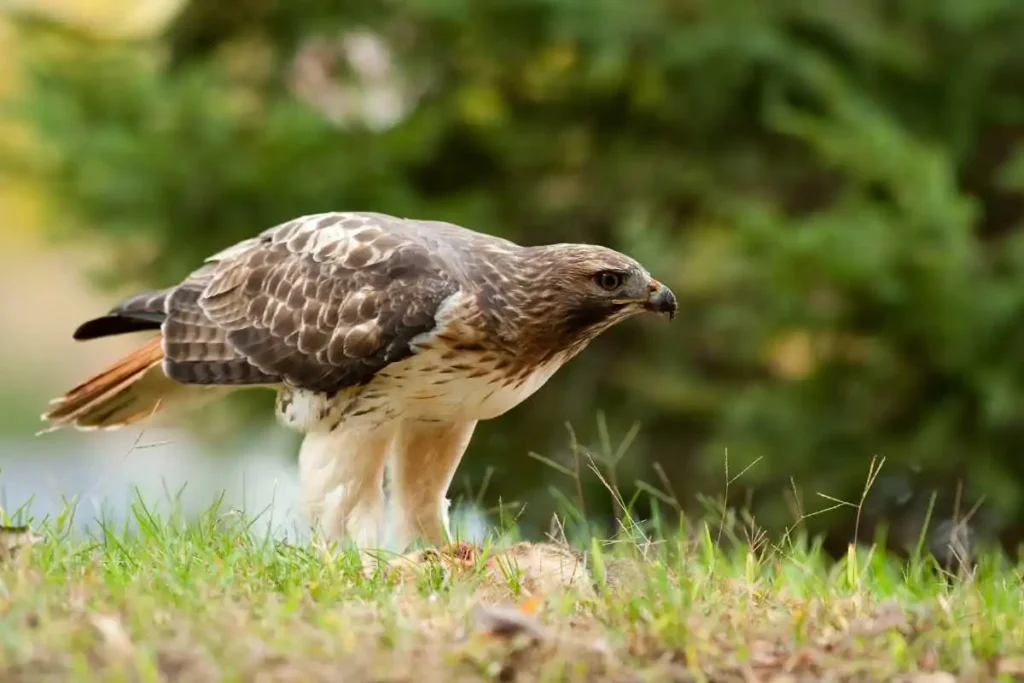Red-Tailed Hawks (Buteo jamaicensis) are among the most common and widely recognized birds of prey in North America. With their distinctive reddish tails and impressive hunting skills, they play a crucial role in maintaining the balance of ecosystems. However, Red-Tailed Hawks face several threats that jeopardize their populations. This article explores how individuals can get involved in conservation efforts to protect these magnificent birds and ensure their future in the wild.

Table of Contents
1. How important Red-Tailed Hawks are ?
Red-Tailed Hawks are essential for their ecosystems, serving as top predators that help control populations of small mammals, birds, and other prey species. Their hunting prowess not only keeps prey populations in check but also contributes to the health of their habitats.
In addition to their ecological role, they have significant cultural and symbolic importance. They are often regarded as symbols of freedom and strength, appearing in various cultural narratives and artworks. Conserving Red-Tailed Hawks is essential not only for maintaining biodiversity but also for preserving the cultural connections that people have with these majestic birds.
2. Threats Facing Red-Tailed Hawks
Despite their adaptability, they face several significant threats that impact their populations:

- Habitat Loss: Urbanization, agricultural expansion, and deforestation lead to the destruction of nesting and hunting habitats. As natural landscapes shrink, Red-Tailed Hawks struggle to find suitable environments for breeding and feeding.
- Collisions with Vehicles: As Red-Tailed Hawks hunt along roadways, they are at risk of being struck by vehicles. This threat is particularly significant during breeding season when they are more active and may be less cautious.
- Pesticide Use: The use of pesticides and rodenticides can have dire consequences for Red-Tailed Hawks. These chemicals can accumulate in the food chain, leading to poisoning and reduced reproductive success.
- Climate Change: Changes in climate patterns can alter prey availability and nesting conditions, making it challenging for Red-Tailed Hawks to thrive.
3. How to Get Involved in Conservation
There are many ways individuals can contribute to the conservation of Red-Tailed Hawks, ensuring their survival for future generations.
3.1 Participating in Citizen Science
Citizen science programs provide an excellent opportunity for individuals to engage in scientific research and contribute to conservation efforts.
How to Get Involved:
- Reporting Sightings: Many organizations encourage bird watchers to report Red-Tailed Hawk sightings. This data helps researchers track population trends and understand their habitat use.
- Monitoring Nesting Sites: Some citizen science programs involve monitoring known nesting sites. Participants can help document nesting success and the challenges faced by hawks.
- Participating in Surveys: Various surveys require volunteers to count hawks during migration periods or breeding seasons. Your observations can contribute valuable data to ongoing research.
3.2 Supporting Conservation Organizations
Supporting organizations dedicated to hawk conservation can significantly impact the survival of Red-Tailed Hawks.
Ways to Support:
- Donations: Financial contributions to organizations focused on wildlife conservation can help fund important research and habitat protection initiatives.
- Volunteering: Many organizations offer volunteer opportunities for habitat restoration, education, and outreach programs. Getting involved in local efforts can make a difference in hawk conservation.
- Membership: Joining a conservation organization can provide access to resources, events, and networking opportunities with like-minded individuals passionate about wildlife protection.
3.3 Advocacy and Education

Advocacy and education play crucial roles in promoting the conservation of Red-Tailed Hawks.
How to Advocate:
- Contacting Legislators: Advocating for policies that protect wildlife habitats and regulate pesticide use is vital. Reach out to local representatives to express your concerns about threats to RedTailed Hawks.
- Educating Others: Share information about RedTailed Hawks and their conservation needs within your community. Organize talks or presentations at schools and community centers to raise awareness.
- Utilizing Social Media: Use social media platforms to spread the word about RedTailed Hawk conservation. Share articles, success stories, and calls to action that can inspire others to get involved.
4. Success Stories in Red-Tailed Hawk Conservation
There have been several success stories in RedTailed Hawk conservation efforts that demonstrate the effectiveness of collective action.
- Nest Protection Programs: In certain regions, nest protection programs have been established to monitor and protect Red-Tailed Hawk nests from disturbances. These initiatives have resulted in increased nesting success rates.
- Urban Nesting Success: As cities develop more green spaces, RedTailed Hawks have adapted by nesting in urban environments. Conservationists have worked with city planners to create bird-friendly spaces that support nesting hawks.
- Community Engagement Initiatives: Successful community engagement initiatives have increased awareness and support for RedTailed Hawk conservation. Local groups have organized events and workshops, fostering a sense of community responsibility toward wildlife protection.
The conservation of Red-Tailed Hawks is a shared responsibility that requires the involvement of individuals, communities, and organizations. By participating in citizen science, supporting conservation organizations, and advocating for wildlife protection, we can all play a vital role in ensuring the survival of these magnificent birds. Together, we can contribute to a future where Red-Tailed Hawks thrive in their natural habitats.

